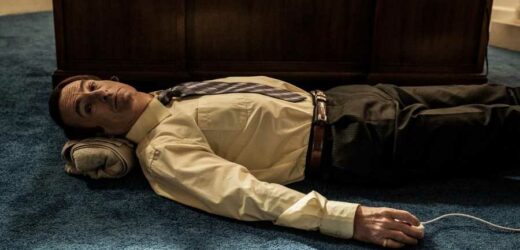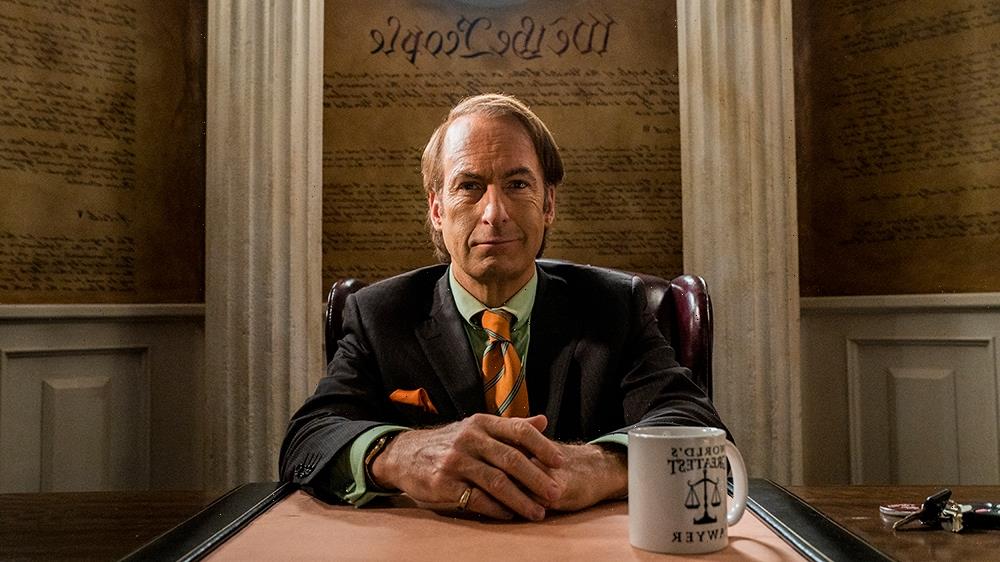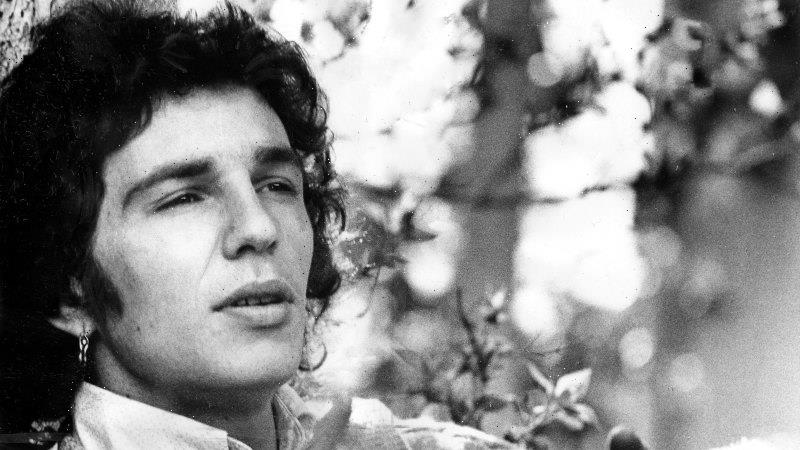A review of this week’s Better Call Saul, with the provocative title of “Breaking Bad,” coming up just as soon as I watch a cat eating ice cream…
“She asked about me.” —Gene
And here they finally are. Walter White and Jesse Pinkman. As the latter would say: Yeah, bitch!
Saul Goodman was introduced on a Breaking Bad episode titled “Better Call Saul,” so it seems only fitting that the Better Call Saul episode presenting those same events from Saul’s perspective should be titled “Breaking Bad.” The hour finally brings us the promised cameos by Bryan Cranston and Aaron Paul as Walt and Jesse, and it does show the audience some of what Saul was thinking and doing when his new clients weren’t around. But it’s much less interested in presenting an alternate history of the Heisenberg era than in drawing parallels between the man Jimmy McGill had become by that point in his life and the man that Gene Takovic is rapidly slipping back into being.
Related Stories
'Better Call Saul' Writer on Finally Entering the World of 'Breaking Bad'
Albuquerque Honors 'Breaking Bad' Meth Duo With Bronze Statue
Related Stories

Fleetwood Mac's 50 Greatest Songs
Meet the Creators and Activists Leading Social Media's Next Wave
Where last week’s “Nippy” took place entirely in Omaha, “Breaking Bad” splits its time between the black-and-white Gene world and the many colors — sometimes muted, sometimes garish — of Saul world circa Breaking Bad Season Two. We open with Saul lying on the floor of the RV — or, as Jesse reminds us that he calls it, “the Crystal Ship” — a bag over his head as he is driven into the desert by men he assumes works for Lalo Salamanca. Then we are back in the Gene timeline, but in Albuquerque, catching up with a miserable Francesca, who now has to pay the bills managing a small apartment building occupied by morons. It is November 12, 2010, two months after the events of both the Breaking Bad finale and El Camino, and a few weeks after Gene and Jeff robbed the department store. It is also Jimmy McGill’s 50th birthday (in a franchise where 50th birthdays tend to be important turning points for the protagonists). But more importantly, it is the date on which Saul and Francesca agreed — in the flash-forward teaser from Season Four’s “Quite a Ride” — that she would be waiting by a payphone for an important call. The person on the other end of the line is our man, desperate for any good news from his old stomping grounds. Most of what Francesca (who is being paid for her time from some cash Saul buried before leaving town) has to offer is the bad kind: With everyone else connected to Walt’s exploits either dead or cooperating with authorities, Saul and Jesse(*) are the two big targets remaining.
(*) As promised in El Camino, Ed the disappearance expert left Jesse’s car down by the Mexican border, sending any manhunt in the opposite direction from Jesse’s new life in Alaska as “Mr. Driscoll.”
Gene (Odenkirk) reaches out to Kim.
Greg Lewis/AMC/Sony Pictures Television
There is one promising development Francesca reluctantly shares, perhaps out of the last residue of affection she has for the man who originally hired her: Kim called to check up on her after Walt and Saul’s exploits became very public, and she “asked if you were alive.” This is an understandable question from a woman who once loved him(*), but Gene treats Kim’s attempt for closure instead as an opening to reach out to her. She has apparently stuck to her decision to leave the law, and is working for a sprinkler company in central Florida. We do not hear either end of the conversation Gene has when he calls the place, as the episode’s writer-director Thomas Schnauz shoots it from outside the grimy roadside phone booth, but we can tell from Bob Odenkirk’s performance that it goes very, very badly. (If Kim couldn’t abide being with Jimmy after one person was killed, how do you think she reacted to the news that he had aided and abetted a drug kingpin with a high body count?) Gene’s response — which includes screaming, slamming down the receiver, and kicking in some of the phone booth’s glass exterior — suggests that a door has just been loudly slammed in his face.
(*) But so what?
Jimmy allowed himself to fully become Saul Goodman as a way to ease the pain after Kim walked out on him. And now Gene does the same thing when he realizes that his dream of one day reuniting with her has been dashed.
The caper from “Nippy” had a light, almost triumphant feeling to it. It wasn’t so much Gene channeling Saul, even with the shirt-and-tie combo he modeled at the end, but Gene slippin’ back to his more benign days as Jimmy. No one was really hurt, other than Frank’s attempts to reduce his waistline. What happens after the Florida phone call is much darker. Saul is in full control now, setting up a thorough, relentless identity theft scam with Jeff and Jeff’s friend Buddy. There is no larger purpose to this the way there was with the mall heist. Yes, Gene might want to rebuild some of the fortune he lost when the feds seized all the assets he thought he had carefully hidden away. But it’s obvious that he’s doing it because he needs the rush he got as Saul, as well as the ability to hurt other people to mask his own pain. As he tricks one sap after another with a very old hustle — pretending to get drunk with them when he’s really draining each glass into a hot water bottle strapped to his belly — he revives his old nom de scam as Viktor. But this is a Viktor who does not have Kim’s Giselle by his side, so there is no component of fun to be had. The cruelty is the point — even after he discovers that his latest mark, Mr. Lingk(*) has an advanced form of cancer.
(*) The name is an homage to the sucker Ricky Roma takes out to dinner in Glengarry Glen Ross.
Though Gene briefly looks regretful on learning this, he still goes ahead with the plan as usual. He is furious to learn that Buddy couldn’t go through with his end of the operation upon noticing Lingk’s medication, which is similar to what Buddy’s father took to battle cancer. It’s not just that Gene, as he indignantly tells his underling, has a history with a cancer patient who was also an asshole — and that Lingk works as a convenient stand-in for the man Gene really wants to blame for his current circumstances, even though they are entirely a result of choices Saul Goodman made voluntarily — it’s that Gene no longer cares who is hurt, or how, just so long as he has a means to shove down all of his own pain for as long as he can keep the grift humming. He fires Buddy and orders Jeff to drive him to Lingk’s house, so blinded with anger that he once again smashes some glass, this time breaking into the house after Buddy removed the duct tape over the lock. It is utterly reckless and pointless, since the whole idea is to prevent the victims from realizing their information has been stolen until much, much later. But Saul Goodman — who Gene has become again in everything but name — doesn’t care. He wants more. He needs more. And he needs it now now now.
Lingk’s condition draws a line back to the episode’s Albuquerque scenes circa “Better Call Saul,” as we see that Saul knew about Walt’s diagnosis even before Walt told him in “4 Days Out.” But the reason the flashbacks are here — besides the opportunity to see Cranston and Paul play these roles together one last time, on a recreation of the Breaking Bad set where they shared so many of their best scenes — is to underline what Gene is doing in 2010. After the bag has been removed from his head and he realizes that his abductor is “Mr. Mayhew”(*), Saul is impressed to figure out that these two clowns are the ones responsible for the blue meth that has been causing such a stir in town. He could just take the money they are paying him to resolve the Badger situation and go back to what is clearly a very lucrative, enjoyable, and fairly safe life. But being Saul Goodman is an addiction, always creating the demand for bigger and more frequent highs. And in Heisenberg, he has found a man who can get him higher than he ever dreamed possible.
(*) This episode may be the biggest test yet of the idea that you can watch Saul without ever having seen its predecessor. There are aspects of this series that depend to some degree or other on your knowledge of Breaking Bad, but the flashbacks here assume a knowledge of the events of the “Better Call Saul” episode that could render it particularly inscrutable to the Saul-only audience.
Schnauz loads the 2008 scenes with visual reminders of the original series: among others, the duct tape covering the bullet holes in the RV’s door, the infamous red light of the RV from “4 Days Out,” and Mike wearing sunglasses (like he did in his very first appearance) when he arrives in Saul’s office. But the Cranston-Paul-Odenkirk interactions are the marquee event, and they live up to our anticipation. No, Paul does not look like an overgrown kid in his early twenties, even shot in darkness and with a beanie covering part of his head. But Jonathan Banks doesn’t look like a middle-aged man anymore, either, and that’s worked out just fine for his work on this series. The Cranston-Paul chemistry is as crackling as it’s always been, and it’s a treat to see once again how easily Walt gets annoyed with both Jesse and Saul, how eager Jesse is to show off his chemistry skills to anyone who will pay attention, and how resentful he in turn can get with Walt’s high-handed demeanor. There’s no big drama, because it would feel like a cheat to insert some new conflict for them that wasn’t part of the step-by-step process we watched on Breaking Bad. But it’s them back in their element one last time, and it’s very, very good.
The more crucial flashback scene in many ways takes place back at Saul’s office. He is lying on the floor using the Swing Master — which he purchases again in the Gene timeline as yet another way to get that ol’ Saul Goodman feeling — when Mike arrives with new intel. This is yet another callback, as Saul was in the same position when Mike came to threaten him in “Full Measure” — a moment that’s arguably the closest Breaking Bad ever came to suggesting Saul knew all along that his investigator really worked for someone else(*).
(*) Here, Mike refuses to talk with Saul until he turns off the Swing Master and stands up like a professional. In “Full Measure,” he orders him to stay on the ground, the better for Mike to maintain his dominant position.
The new scene clarifies the true nature of their arrangement. Saul knows that Mike is in the primary employ of “He Who Shall Not Be Named.” But Mike also does work for Saul as a way of gathering intel on the Albuquerque criminal community, since Saul has purchased Dr. Caldera’s little black book and is facilitating shady business on the side. More importantly, it does not attempt to retcon the nature of Saul’s initial interactions with Walt. We know, from the flashback at the start of Breaking Bad Season Four, that Gus was already interested in the blue meth because Gale wouldn’t stop raving about it. But Saul’s interest in working with Heisenberg is entirely his own. Even after Mike warns him that this guy is a reckless amateur who will endanger anyone foolish enough to work with him — advice Mike ultimately, and fatally, fails to take for himself — Saul can’t let go of the idea. In Heisenberg, he sees a meal ticket. Attempting to be “a friend of the cartel” had nightmarish repercussions for Jimmy, including the death of Howard and the loss of Kim. But he has always been one to believe that the problem was never with the scheme, but its execution. This high school teacher does not seem to be the physical or tactical threat of a Lalo, and is such a bumbler overall at this stage that Saul sees him as someone he can puppeteer into generating a large fortune for all involved.
And the idea works, for a while. But then Walt and Gus go to war, then Walt and Jesse do, Walt and Hank, and Walt and the Nazis, and now the man who once called himself Saul Goodman lives alone in Omaha (and is back to paying sex workers), works in a shopping mall, and gets his kicks running short cons on well-to-do men in bars. It always ends in ruins, like the statue of Ozymandias that gave the best Breaking Bad episode its title, and that Saul unwittingly alludes to here when joking about him and his new criminal partners being buried in a sandstorm for a thousand years. He does not listen to Mike’s counsel in the office, nor does he listen to Buddy and Jeff’s attempts to tell him he is taking the current sting way too far.
Jeff (Pat Healy) gives Gene some advice.
Greg Lewis/AMC/Sony Pictures Television
The episode neatly transitions back and forth between the eras so that, for instance, Gene slamming the door of Jeff’s cab turns into Saul closing the door of his Cadillac as he prepares to confront Walt at the school where he works. The most effective of these comes right after the Walt and Jesse scene. Walt finally gets the Crystal Ship running, but the camera lingers on the grave he and Jesse dug to scare Saul into cooperating, and that shot in turn dissolves into Gene lying awake in his bed — the two compositions blending together in a way that makes it look as if Gene is down at the bottom of that pit. He has metaphorically dug his own grave, despite ample warnings from Chuck, Kim, Mike, and now even Jeff. Even if he doesn’t get caught for breaking into Mr. Lingk’s house, he is in a spiral entirely of his own making. He’s wearing Marco’s pinkie ring again, and otherwise donning the bland garb of Gene Takovic, but there is no one to blame here other than Jimmy McGill and the choice he made to become Saul Goodman.
That happy ending that Gene joked about with Marion last week seems very far away right now, if not impossible.
Some other thoughts:
* I spoke at length with Thomas Schnauz about the opportunity to bring back Walt and Jesse, why he thinks Mike is still working for Saul all these years later, and a whole lot more. A great conversation.
* Vince Gilligan used El Camino to tie off one semi-loose Breaking Bad story thread by having Jesse hear a radio report clarifying that Walt definitely died from the gunshot wound, since some fans had speculated that he somehow survived. Schnauz uses Gene’s conversation with Francesca to provide a bit more closure to the original series. We learn that the lottery ticket that Walt gave Skyler, featuring the GPS coordinates of Hank and Gomez’s burial site, managed to get Skyler out of her legal trouble, as Walt had hoped. More amusingly, we find out that Huell made it home to Louisiana, getting off scot-free from his involvement in the criminal enterprise because Hank and Gomez left him illegally in a DEA safe house while they went off in their doomed pursuit of Walt.
* Francesca also gives us closure on a familiar figure from this series, as we find out that Jimmy’s old sparring partner from the DA’s office, Bill Oakley, has gone into private practice, and even has “William Oakley & Associates” bus bench ads like Saul once did.
* Once again, we get a warped VHS tape version of a familiar Saul title sequence. And once again, the cast credits only list actors who are in the episode, so just Odenkirk and Banks, with no Seehorn, Fabian, et al. It almost feels like these final four episodes are being presented as a brief sequel show to the one that ended with “Fun and Games.”
* That is not a cover of The Monkees’ “Tapioca Tundra” playing over the identity theft montage, but Mike Nesmith’s original demo of the song. Schnauz loves The Monkees.
* “Nippy” gave us an in-jokey fake product by having Marion sample a piece of Schnauz Cheese at the supermarket, and here we see that Gene’s first victim has money squirreled away with Cherkis Investments, named after longtime Saul writer Ann Cherkis.
* Another callback to earlier in the series: Gene buys burner phones for Jeff and Buddy to make it easier to keep in touch with the scams.
* Finally, this is the last episode of Better Call Saul that critics will be seeing in advance. So coverage of the two concluding chapters will come later than has been the norm so far.
Source: Read Full Article



